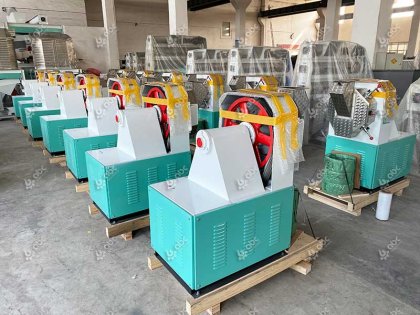HOME > Resource Center > Biofuel Densification Topics > Discovering Pellet Materials Varieties & Applications
There's a huge abundance of coconuts all over the world and it would be a waste of resources if coconut shells are just thrown away or burned. This is why engineers and scientists have come up with an ingenious way of turning coconut shells into reusable materials. The process is called pelletizing and it involves turning the discarded shells into pellets that can be used in various fields like sustainable energy production, biomass extraction, and agriculture. For the process to work, you are going to need what's called a coconut shell pelletizing plant. The setup of the factory may look complicated at first glance but it's not, once you learn about the factory's main components.

The Bottom Line
When everything has been said and done, setting up a coconut shell pelletizing factory is a great and sustainable idea. There are a lot of benefits that you can derive from it. Aside from the fact that it can be a profitable business, you will also be helping in providing an alternative source of fuel for energy-conscious people.
The 3 Most Important Components of a Pelletizing Factory
- The Hammer Mill - This is a very common machine that is used in a lot of industries. Basically, it's a mill whose main purpose is to crush or shred materials into much smaller pieces by subjecting the materials into repeated blows from several small hammers. For this reason, hammer mills are often referred to as crushers or pulverizers. What the hammer mill does is crush the coconut shells into very tiny pieces then slowly pulverize them. The resulting material will then be sent to the dryer machine.
- The Dryer Machine - The most common type of dryer machines used in pelletizing factories are drum dryer machines. These are widely used because of their high capacity. If you are going to process hundreds of coconut shells everyday, it's highly recommended that you get a drum dryer machine. This machine consists of the main body, a collector system, a feeding system, and a ducting system.
- The Pellet Mill - This is the mill that will finally turn the dried coconut materials into reusable pellets. There are different types of pellet mills. The differences between them are usually in the power needed to run them and the amount of pellets they can produce within a specific period of time. Basically, what the pellet mill does is to create pellets using an innovative machine press. The powdered coconut material that goes out of the dryer machine will be directed to the pellet mill for processing.
The Benefits of Setting Up a Coconut Shell Pelletizing Factory
The factory can be a great source of biomass fuel. The pellets that the factory produces can be used as an alternative energy source. If you are able to produce huge amounts of pellets, you can turn it into a very profitable business. Coconut plantations will be more than glad to sell you their coconut shells at very low prices because these are not their main products. The shells are your main ingredients. Your operating costs will largely be composed of the labor you hire in running and maintaining the machines in your factory.
The Bottom Line
When everything has been said and done, setting up a coconut shell pelletizing factory is a great and sustainable idea. There are a lot of benefits that you can derive from it. Aside from the fact that it can be a profitable business, you will also be helping in providing an alternative source of fuel for energy-conscious people.
















